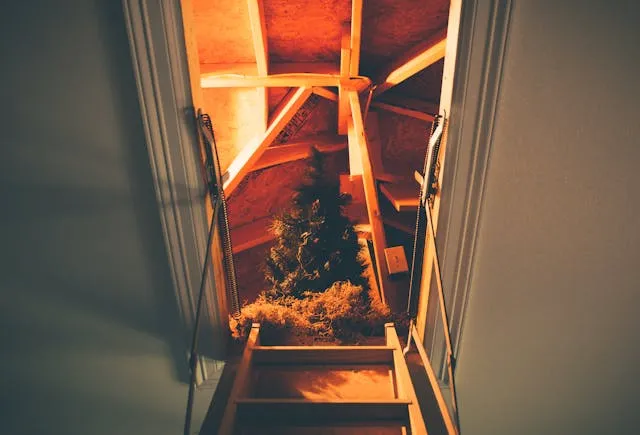
Installing rigid foam insulation on roof
What you need to know about common roof leaks
A Beginner’s Guide to Installing Rigid Foam Insulation on Your Roof
Are you looking to improve your home’s energy efficiency and comfort? Installing rigid foam insulation on your roof can be a game changer at no monthly cost. In this guide, we’ll walk you through the process step by step, whether you’re a DIY enthusiast or considering hiring a professional roofing contractor.
Understanding Rigid Foam Insulation: Let’s start with the basics. Rigid foam insulation is a lightweight and durable material made from polystyrene, polyisocyanurate, or polyurethane. It’s great for roofs because it offers excellent thermal resistance, moisture protection, and durability.
The Benefits of Rigid Foam Insulation: Here’s why it’s a smart choice for your roof:
- Keeps Your Home Cozy: It helps maintain consistent indoor temperatures, reducing your heating and cooling bills.
- Fights Moisture: Unlike other insulation, it’s resistant to moisture, preventing mould and water damage.
- Built to Last: It’s tough and can withstand pests, fire, and harsh weather.
DIY Installation Steps: If you’re up for the challenge, follow these steps:
- Check Your Roof: Look for any existing issues and make sure your roof is in good shape.
- Get Your Gear: You’ll need insulation boards, adhesive, tape, and safety equipment.
- Prep Your Roof: Clean it up and fix any problems before you start.
- Measure and Cut: Get your insulation boards to fit snugly on the inside of the roof squares.
- Secure Them: Use adhesive or fasteners to hold the boards in place.
- Seal the Gaps: Use tape or sealant to keep air from leaking out.
- Finish Up: Add more layers if needed and protect the insulation with roofing materials.
When to Call in the Pros: Not feeling confident? No problem. A professional roofer can handle the job for you, ensuring it’s done right the first time.
Need Help in Surrey? Contact Master Roofing UK: Whether you’re a DIYer or want to leave it to the experts, we’ve got you covered. Master Roofing UK roofing services in Surrey are reliable and experienced in many types of roofs. Reach out to us for reliable service and quality results.
Common Questions and Answers
Rigid foam insulation is a type of insulation board made from materials like polystyrene, polyisocyanurate, or polyurethane. It’s a great choice for roofs because it provides excellent thermal resistance, moisture protection, and durability, helping to improve energy efficiency and comfort in your home.
While installing rigid foam insulation can be a DIY project for those with experience and knowledge of roofing and insulation techniques, it’s often best left to the professionals. Hiring a professional roofer ensures that the insulation is installed correctly, minimizing the risk of issues like air leaks or moisture problems.
The installation process typically involves cleaning and prepping the roof surface, measuring and cutting the insulation boards to fit, securing the boards in place with adhesive or fasteners, sealing any gaps or joints with tape or sealant, and adding additional layers or roofing materials as needed.
The cost of installing rigid foam insulation in a roof can vary depending on factors such as the size and complexity of the project, the type and thickness of the insulation boards, and whether you choose to hire a professional or DIY. It’s best to get quotes from reputable roofing contractors for an accurate estimate.
Rigid foam insulation offers several benefits, including improved energy efficiency, enhanced comfort, reduced heating and cooling costs, increased durability and lifespan of the roof, and protection against moisture and mold growth.
It’s essential to check the warranty documentation for your roofing materials before installing rigid foam insulation. Some warranties may require specific installation methods or materials to remain valid, so it’s best to consult with the manufacturer or a roofing professional to ensure compliance.
The installation time for rigid foam insulation in a roof can vary depending on factors such as the size and complexity of the project, the accessibility of the roof, and whether any additional repairs or modifications are needed. A professional roofing contractor can provide a more accurate timeline based on your specific requirements.
Proper ventilation and moisture management are essential for the long-term performance and durability of any roofing system, including roofs with rigid foam insulation. Your roofing contractor can assess your roof’s ventilation needs and recommend appropriate solutions to prevent issues like condensation or mould growth.
While rigid foam insulation can provide some degree of sound insulation, its primary purpose is to improve thermal performance and moisture resistance. If noise reduction is a significant concern, additional soundproofing measures may be necessary, such as installing acoustic insulation or soundproofing materials.
Improving the energy efficiency and comfort of your home with features like rigid foam insulation can potentially increase its resale value by making it more attractive to potential buyers. Additionally, having a well insulated roof can reduce ongoing heating and cooling costs, which may be appealing to eco conscious buyers.

